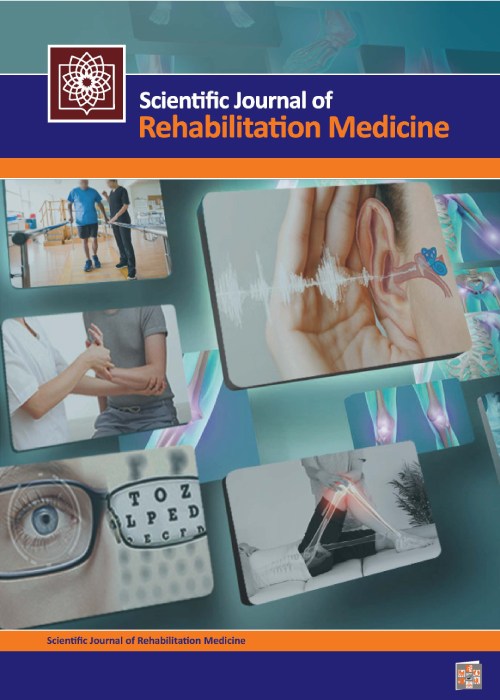Relationship between the medial longitudinal arch and the thoracic and lumbar curvatures with the static and dynamic stability in obese females
Author(s):
Abstract:
Background And Aim
Reviewing the literature reveals a possible correlation between the obesity and the potential foot, spine and stability problems. Investigating the important parameters affecting the balance of obese people and prevention from falling are of high importance to reduce the resulting expenditures. This study aimed to assess the acts and the counter acts between the medial longitudinal arch (MLA) and the thoracic and lumbar curvatures with the static and dynamic stability in obese females. Materials And Methods
Twenty eight obese females (age= 25±8 years old, BMI=37±4) and twenty nine non-obese females (age= 23±4 years old, BMI=23±3) were recruited in this case-control study with the cross-sectional technique. The MLA, spinal curve angles and the static or dynamic balance index of the subjects were measured using the navicular drop, flexible ruler and Biodex balance system tools, respectively. The static balance test was carried out using a modified Clinical Test of Sensory Interaction and Balance (CTSIB) test in both the open and closed eyes while the subjects stood on their dominant legs. The order of the dynamic and static tests was selected randomly.Results
The findings of this study showed that in closed eye condition, most changes happened between the global Stability Index (SI) and BMI; while in open eye condition, most changes occurred between the lateral-medial stability index and BMI (r=0.5). Also during an open eye condition, a moderate correlation was found between the navicular drop and lateral-medial stability index (r=0.05). In closed eyes condition, no significant changes were found between the SI and lumbar lordosis (r=0.0004); while a weak correlation was found between the thoracic curve angle and lateral-medial stability index (r=0.04).Conclusion
The dynamic stability is not only correlated to their BMI, but is highly dependent on their foot curvature types and slightly on their thoracic curve angle. Abdominal obesity always played a significant role in antero-posterior stability index. Lumbar curvature showed a minor effect on static index value.Keywords:
Language:
Persian
Published:
Scientific Journal of Rehabilitation Medicine, Volume:1 Issue: 2, 2013
Page:
15
magiran.com/p1087353
دانلود و مطالعه متن این مقاله با یکی از روشهای زیر امکان پذیر است:
اشتراک شخصی
با عضویت و پرداخت آنلاین حق اشتراک یکساله به مبلغ 1,390,000ريال میتوانید 70 عنوان مطلب دانلود کنید!
اشتراک سازمانی
به کتابخانه دانشگاه یا محل کار خود پیشنهاد کنید تا اشتراک سازمانی این پایگاه را برای دسترسی نامحدود همه کاربران به متن مطالب تهیه نمایند!
توجه!
- حق عضویت دریافتی صرف حمایت از نشریات عضو و نگهداری، تکمیل و توسعه مگیران میشود.
- پرداخت حق اشتراک و دانلود مقالات اجازه بازنشر آن در سایر رسانههای چاپی و دیجیتال را به کاربر نمیدهد.
دسترسی سراسری کاربران دانشگاه پیام نور!
اعضای هیئت علمی و دانشجویان دانشگاه پیام نور در سراسر کشور، در صورت ثبت نام با ایمیل دانشگاهی، تا پایان فروردین ماه 1403 به مقالات سایت دسترسی خواهند داشت!
In order to view content subscription is required
Personal subscription
Subscribe magiran.com for 70 € euros via PayPal and download 70 articles during a year.
Organization subscription
Please contact us to subscribe your university or library for unlimited access!



